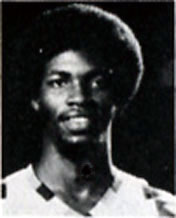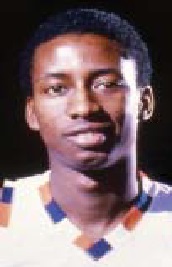You sometimes hear that a college has a “pipeline” with a particular high school, a school where they seem to get a lot of their top talent from. I do not think those situations are as prominent as some may suggest, at least not in the past few decades, though there are clearly situations where a school as obtained two or three good players in a short period of time from one high school.
I’ve started working recently on my OrangeHoops website, putting together
a listing of all the high schools and prep schools that Syracuse players have attended. It’s by no means a complete list, and admittedly, since I am short of all the data, there could be some significant contributing schools that I am missing. Nevertheless, I do have some opinions on which schools have helped Syracuse basketball the most over its 110 year history.
Top of mind will be Jamesville-Dewitt High School, who already sent Danny Schayes and Andy Rautins to the Orangemen. With Brandon Triche joining the Orange this year, it will be interesting to see how he does; if he has an outstanding collegiate career, J-D will definitely move up my list. I think it is interesting that the three most significant Orangemen basketball players from J-D are all related to notable Syracuse basketball players. Danny was the son of NBA Legend
Dolph Schayes of the Syracuse Nationals, Andy of course the son of
Leo Rautins, and Brandon the nephew of former Syracuse captain
Howard Triche.
Now when ranking the impact the schools have had on Syracuse, it is both a combination of the greatness of the players and how many players. Towson Catholic gave Syracuse Carmelo Anthony and Donte Greene, but that is only two players, both who only played one year at Syracuse. Admittedly, two of the best freshman seasons on the hill ever, but not enough to make the top 5.
Dunbar High School (Baltimore) gave us some players in the 1980s & 90s, Masten Park (Buffalo) basically formed the team in the early 1900s, Christian Brothers Academy (CBA) has sprinkled in some players over the years, and Lansingburg (Troy, NY) gave the Orange some solid players in the 1920s. Tiny Norwich was a big impact on the Orange in the first quarter century, and the Manlius Military Academy had its moments before it closed down.
However, these are my top five:
Binghamton Central (Binghamton, NY). Binghamton gave Syracuse a four sport letterman in Joe Vavra in the 1930s; he would be more successful in boxing than in the other sports, but nevertheless was a valuable member of the basketball team. It was when
Bullet Billy Gabor stepped on the court in 1942 that Binghamton Central became important; Gabor was the first thousand point man for Syracuse. In the 1950s two more BC guys came, Ted Parke, and Jon Cincebox. Cincebox is from a statistical perspective the best rebounder Syracuse has ever had (based on rebounds per game).
Springarn High School (Washington, DC). This is the exception to the rule, but what an exception. Only three players to Syracuse, but when two of them are
Dave Bing and
Sherman Douglas, arguably the two best guards Syracuse has ever had, it’s tough to overlook the school. Add in Gerry McFadden who transferred to Syracuse in the late 1960s, and you have three starters from this D.C. school.
The top three schools are miles ahead of the rest, and were difficult to sort through. At number three I have Mont Pleasant High School (Schenectady, NY). This school was indeed a pipeline for the Orangemen, starting in the 1930s and going into the late 1950s. John Gorecki, Paul Podbielski, Don MacNaughton, Stan Kruse, Chris Koray, Roy Peters, Dick Suprunowicz, Bill Manikis, Jack Larnad, Larry Loudis, Bruce Kollath, and Chaundu Carey all came from Mont Pleasant. While this school was not producing superstar players for the Orange, it was producing solid everyday players, the type of players who start for two or three seasons, or do the dirty work of a sixth or seventh man.
Number two is Central High School, of Syracuse, now long closed. In the 1920s Central was the pipeline for Syracuse University, and was one of the best basketball programs in New York State. Central did not have a basketball team until shortly before 1920. Syracuse basketball players George Noakes and Herman Brickman, though both alumni of Central, likely played basketball for the Syracuse YMCA rather than at Central. But basketball was becoming a popular sport, and individuals such as Dave Brodsky championed to have the programs at their high schools.
That would lead to players such as Brodsky, Gordon Mahley and Phil Rakov playing together in high school, and then together for the Orangemen. More importantly, a young man named
Vic Hanson also played basketball with them at Central. Hanson, of course, would lead Syracuse to the 1927 Helms Foundation National Championship, along with earning himself recognition in the College Basketball Hall of Fame and the College Football Hall of Fame.
Brodsky, upon graduation at Syracuse, would go back to Central and coach the basketball team for several years. He would win several district championships and some state championships while there. All which would lead to Brodsky as being recognized as the “father of Syracuse high school basketball”. Along the way, talented players such as Ken Beagle, Ronnie Phillips, George Armstrong and Warren Stevens would play for him. Later players such as Adam Markowski, the wonderfully talented Manny Breland, and crew legend Bill Sanford would attend Central.
Which brings us to the top high school for Syracuse basketball. Surprisingly, it is not a Syracuse area high school, though it is a New York school. Brooklyn Boys & Girls School (formerly Brooklyn Boys) has been the source of more impact players than any other high school for Syracuse basketball. In the mid 1910’s, Syracuse saw the arrival of Charley Dolley and John Barsha. Dolley was a great shooter, and developed a reputation at Syracuse for his game winning shots. Barsha was an outstanding defensive player, and a critical part of the 1918 Syracuse Helms Foundation National Champions. Barsha would also earn All-American status in football. Fellow gridiron star Herm Sawyer would also play hoops.
In the 1950’s Brooklyn Boys & Girls would send the talented
Vinnie Cohen to the Hill. Cohen would lead Syracuse to its first NCAA berth, and a final position in the Elite eight, along with being the first Syracuse player to average twenty points a game in a season. The 1960s saw Sam Penceal arrive with his strong defensive play (good enough to shut down the multi-talented Bill Bradley). Later in the decade,
Vaughn Harper brought his tremendous leaping ability and rebounding skills to the Orangemen. And last, but certainly not least, in 1983 Boy & Girls sent the much publicized
Pearl Washington to the Dome, where the Pearl electrified the crowds, and helped make 30k-plus crowds a true ‘happening’ in the Carrier Dome.
Who knows? Perhaps the success of Jonny Flynn and Paul Harris will revitalize the Buffalo connection. Or Kris Joseph will help the Baltimore/D.C. pipeline, or the Canadian express line. But the schools above, definitely helped sculpt the landscape of Syracuse basketball.











